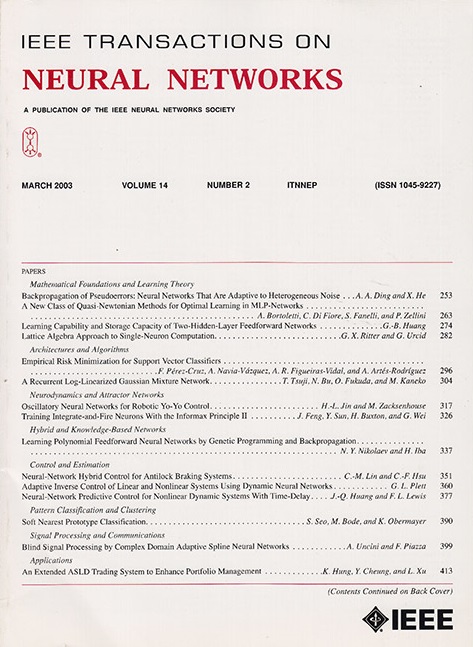基于相似性修剪指示器的多头注意力自动修剪。
IF 8.9
1区 计算机科学
Q1 COMPUTER SCIENCE, ARTIFICIAL INTELLIGENCE
IEEE transactions on neural networks and learning systems
Pub Date : 2025-09-15
DOI:10.1109/tnnls.2025.3606750
引用次数: 0
摘要
尽管变压器具有较强的性能,但自注意的二次计算复杂性给其在视觉任务中的应用带来了挑战。线性注意力将这种复杂性从二次型降低到线性,提供了强大的计算性能权衡。为了进一步优化这一点,自动修剪是一种有效的方法,可以通过训练在目标资源中找到性能最大化的结构,而不需要任何启发式方法。然而,由于频道不匹配,将其直接应用于多头注意力并不简单。在本文中,我们提出了一种自动修剪方法来处理这一问题。不同于现有的仅依赖于训练而没有任何先验知识的方法,我们将基于通道相似度的权重整合到修剪指标中,以保留每个头部内更多信息的通道。然后,我们调整修剪指示器以强制在所有头部均匀地删除通道,从而避免任何通道不匹配。我们结合了一个重权模块来减轻由于通道移除而造成的信息损失,并基于原始结构和每个通道之间的注意差异,为线性注意力引入了一个有效的修剪指标初始化。通过将我们的修剪方法应用于ImageNet-1K上的flattransformer,该方法结合了原始和线性注意机制,我们以近乎无损的方式实现了30%的flop减少。与DeiT-B模型相比,它的精度提高了1.96%,同时FLOPs降低了37%;与swing - b模型相比,它的精度提高了1.05%,FLOPs降低了10%。提出的方法优于以前的最先进的高效模型和最近的修剪方法。本文章由计算机程序翻译,如有差异,请以英文原文为准。
AMAP: Automatic Multihead Attention Pruning by Similarity-Based Pruning Indicator.
Despite the strong performance of transformers, quadratic computation complexity of self-attention presents challenges in applying them to vision tasks. Linear attention reduces this complexity from quadratic to linear, offering a strong computation-performance tradeoff. To further optimize this, automatic pruning is an effective method to find a structure that maximizes performance within a target resource through training without any heuristic approaches. However, directly applying it to multihead attention is not straightforward due to channel mismatch. In this article, we propose an automatic pruning method to deal with this problem. Different from existing methods that rely solely on training without any prior knowledge, we integrate channel similarity-based weights into the pruning indicator to preserve the more informative channels within each head. Then, we adjust the pruning indicator to enforce that channels are removed evenly across all heads, thereby avoiding any channel mismatch. We incorporate a reweight module to mitigate information loss due to channel removal and introduce an effective pruning indicator initialization for linear attention, based on the attention differences between the original structure and each channel. By applying our pruning method to the FLattenTransformer on ImageNet-1K, which incorporates original and linear attention mechanisms, we achieve a 30% reduction of FLOPs in a near lossless manner. It also has 1.96% of accuracy gain over the DeiT-B model while reducing FLOPs by 37%, and 1.05% accuracy increase over the Swin-B model with a 10% reduction in FLOPs as well. The proposed method outperforms previous state-of-the-art efficient models and the recent pruning methods.
求助全文
通过发布文献求助,成功后即可免费获取论文全文。
去求助
来源期刊

IEEE transactions on neural networks and learning systems
COMPUTER SCIENCE, ARTIFICIAL INTELLIGENCE-COMPUTER SCIENCE, HARDWARE & ARCHITECTURE
CiteScore
23.80
自引率
9.60%
发文量
2102
审稿时长
3-8 weeks
期刊介绍:
The focus of IEEE Transactions on Neural Networks and Learning Systems is to present scholarly articles discussing the theory, design, and applications of neural networks as well as other learning systems. The journal primarily highlights technical and scientific research in this domain.
 求助内容:
求助内容: 应助结果提醒方式:
应助结果提醒方式:


